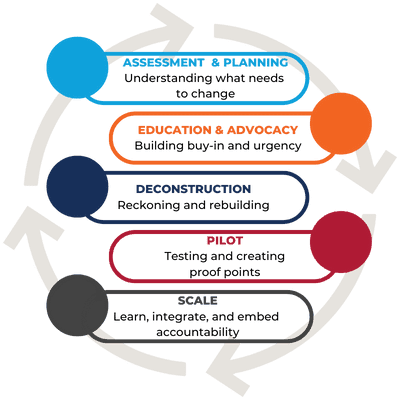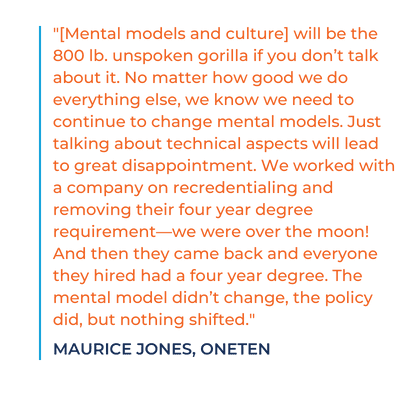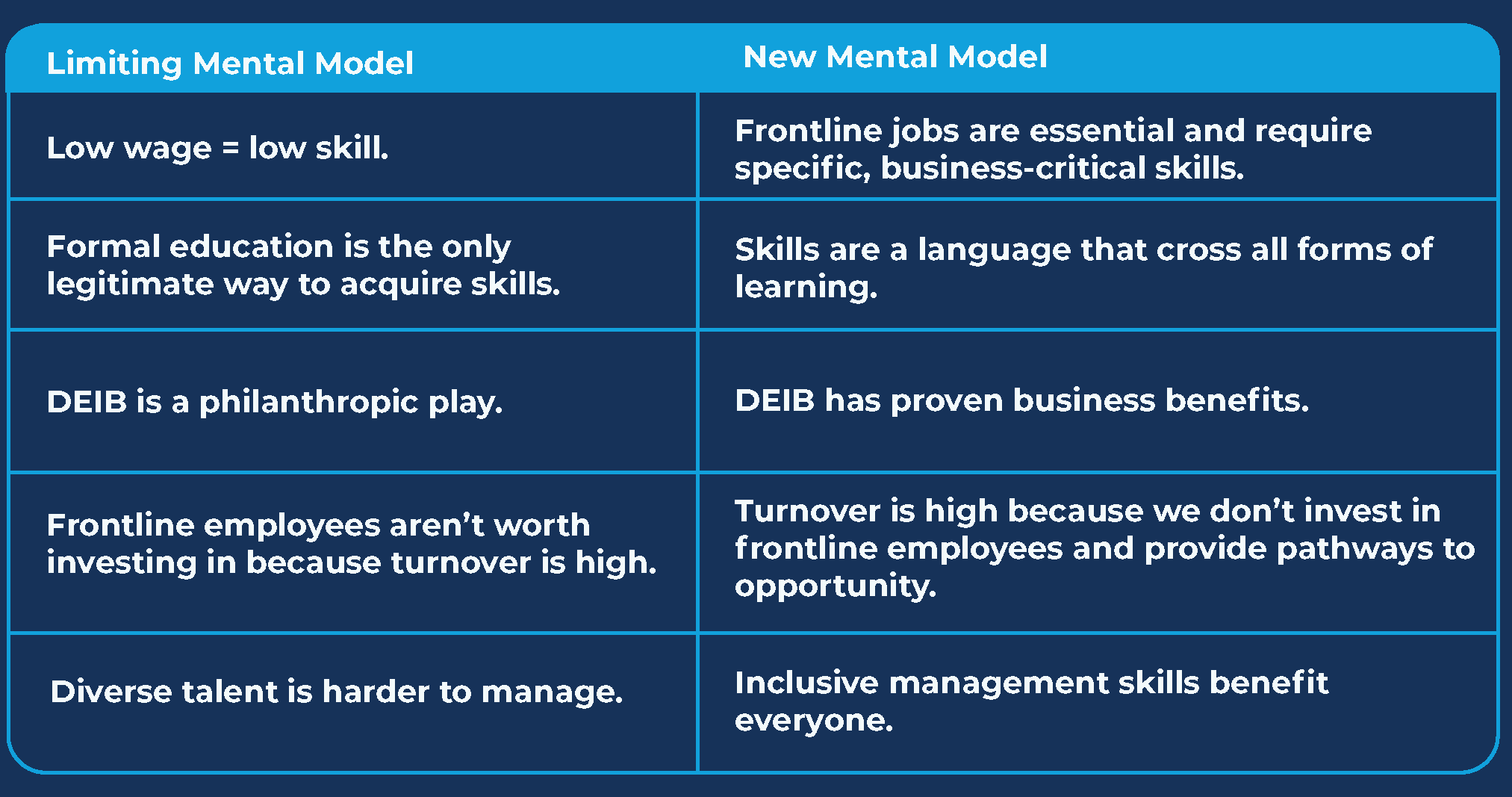How Change Happens
 Human resources leaders and teams have a pivotal role to play in enabling enterprise-wide cultural change to advance their organization’s commitment to racial equity
Human resources leaders and teams have a pivotal role to play in enabling enterprise-wide cultural change to advance their organization’s commitment to racial equity
Since 2020, America’s largest companies have allocated billions of dollars & made public commitments to advance DEIB within their organizations. Despite these significant corporate commitments, research shows that frontline employees, who are disproportionately BIPOC & women, report the lowest overall feelings of inclusion and are 20% less likely than corporate employees to believe that DEIB policies are effective.
Practice and policy change needs to be accompanied by a focus on mental model shifts and culture change in order for organizations to see impactful and sustainable change. In How Change Happens we introduce an actionable change management strategy for HR leaders designed to address the harmful policies, practices, norms, narratives, & relationships that hold systemic inequities in place.
Change Management Process for HR
By engaging with companies and the advisers who support them, we have identified a common process for change management of culture and mental model shift. Though these steps are generally sequential, it’s important to note that this work is iterative and ongoing. For example, education is both a critical early step and a continued need as the company shifts its ways of working, brings new people on board, and reorients around equity and purpose.
The first three steps in the process are where the majority of the mental model and culture change work happens. This lays the groundwork for the piloting, iteration, and ongoing learning as the change takes hold in policies, practices, and resource flows.

Shifting Mental Models to Advance DEIB
DEIB is a stated priority of many companies today, but the culture shift necessary to support and sustain that priority is often overlooked and under-resourced. Positioning DEIB itself as a change management effort can help organizations resource it accordingly. Just like any other change management process, be it a merger or adoption of new technology, transitioning to an equitable and inclusive corporate culture requires time, budget, capacity, and cross functional partnership.
What’s unique about managing organizational culture shift is the depth of change required and how long it takes for change to meaningfully take root. Authentically integrating DEIB into an organization doesn’t just require shifting practices, policies, and philanthropy, it also requires an overhaul of our mental models and how we relate to one another.

Mental Models 101
Mental Models
Habits of thought—deeply held beliefs and assumptions and taken-for-granted ways of operating that influence how we think, what we do, and how we talk.
Mental model change is critical to meaningful corporate progress on DEIB, but can feel intangible or hard to impact at scale. Here, we’ve gathered a list of the common mental models that we aim to shift.

 The research included in this report was made possible through funding from Walmart.
The research included in this report was made possible through funding from Walmart.






